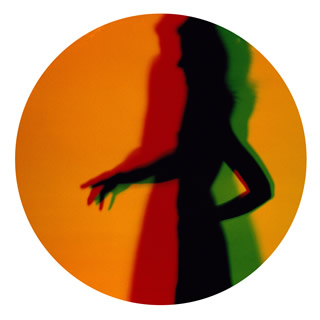AMORE (2 Atti)
- Production: Fanny & Alexander and Ravenna Festival, with the contribution of Fondazione Cassa di Risparmio di Ravenna, inspired by some
- Texts: by Tommaso Landolfi
- Concept: Chiara Lagani and Luigi de Angelis
- Direction, set, lighting design, soundtrack: Luigi de Angelis
- Dramaturgy: Chiara Lagani
- Costumes project: BIANCA E BLU MONICA BOLZONI MODA DESIGNER with Marco Cavalcoli and Chiara Lagani
- Literary consultant: Rodolfo Sacchettini
- Scenery realization: Opera Ovunque
- Electrotechnical realization: Andrea Catalano and Marco Cavalcoli
- Painting: Cristian Zurita
- Wax sculpture: Lia Pari
- Super8 and audio shootings: Luigi de Angelis
consolle Davide Sacco - Costumes assistant: Sofia Vannini
- Make up: Apollonia Tolo
- Promotion and press office: Valentina Ciampi and Marco Molduzzi
- Logistics: Sergio Carioli
- Administration: Marco Cavalcoli and Antonietta Sciancalepore
- with thanks to Daniela Andrello, A.p.A.I. – Casa dell’Arte, Alessandro Argnani, Catherine Boving, Cinzia Dezi, Elisa Eusebi, Enrico Fedrigoli, Enrico Isola, Francesca Merciari, Massimo Paci, Symrise GmbH & Co. KG, Zapruder Filmmakersgroup
with special thanks to Idolina Landolfi
Year : 2007
AMORE (2 atti)
Amore is a parable in 2 acts on art and poetic inspiration.
The parable means to show:
How to explain art to a sleeping lamb;
How to speak an impossible or forgotten language;
How far you can go following the intemperance of your own imagination;
Other things of the like.
Languages of the 2 acts:
1. D is in Italian language.
2. P is in P language (see the legend) with no subtitles but with (approximate) introductive instructions in Italian language.
1. D, symbolic fabula:
The scene (or rather the speech) takes place in a foreign big café, or restaurant.
D gives out his speech to a lamb like a rosary. At a certain point, the roaring sound of the orchestra and the people becomes deafening. D speaks like he was on an airplane or in front of Niagara Falls, loudly casting towards the lamb the characteristic words of a speech.
Now: which creature do you suppose can rise or come to life, if you prefer, out of such a speech on a cloudy night?
Anyway, after having reached its top, the big noise in the hall attenuates. Then the whole café (or restaurant) gets the miserable and alarming appearance that is characteristic, at certain intermediate moments, of the places that can only take life out of the public or in solitude (restaurants, cafés, hospitals, theatres).
So that scene goes on until the blonde woman with the letter P enters. Everyone clicks his tongue at her sight, because she simply and only looks like a beautiful blonde woman. But when she lifts her only eye on D everyone thinks: now she goes away and I will never see her again!
But P doesn’t go away, on the contrary a solemn and unexplainable event takes place: she stops, with a slightly dull voice: “we are oppressed by an ache, maybe the very same one: let’s go out for a walk”, she says.
2. P, linguistic demonstration (in three phases):
1) Propaedeutic to P language.
Approximate and tardy introduction to the language of lights and colors, of vices and virtues.
2) Original fragment in P language. Legend:
SADNESS AND PAIN Tristezza e dolore
BROTHERLY LOVE Amore fraterno
UNHAPPY LOVE Amore infelice
RICHNESS Ricchezza
PURITY Purezza
HAPPY LOVE Amore felice
HATE AND PROTERVITY Odio e protervia
JOY AND SERENITY Gioia e serenità
3) Gridelin: a muddy dawn cuts off every speech.
Despite all appearances, the tale is not over yet.
AMORE (2 atti) is inspired by La piccola Apocalisse di Tommaso Landolfi, from which also a large part of this dispatch draws inspiration.
